Chocolate sorbet (spicy and relatively lean)
Making lean chocolate sorbet is fairly easy. But making lean and well-tasting chocolate sorbet is a different matter. Follow my quest for a quite fat-free but still enjoyable chocolate frozen treat.
As most calorie-sensitive people know, sorbets are generally preferable to ice cream when it comes to minding one’s weight. While sorbets admittedly contain a lot of sugar they at least tend to contain little or no fat. That, however, is something that usually does not apply to chocolate sorbets. Most of those recipes actually pack quite a lot of fat – the consequence of having (melted) ‘normal’ chocolate amongst the ingredients.
So, what about those lean recipes that suggest only adding some pure cocoa powder for flavour then? Unfortunately, chocolate sorbets made with virtually no fat contain dangerously little solids … which in turn usually lead to a disappointing sorbet experience: fast-fleeing flavour sensations, disappointingly rapid meltdowns and generally unsatisfactory consistencies. And by only using plain cocoa-powder – particularly in our frozen contexts – the very chocolate flavour unfortunately often comes across as somewhat shallow and “thin”. In short, the lack of fat tends to make the flavour experience less appealing.
Taking my inspiration from a recipe by Ina Garten (the Barefoot Contessa), I set out to ‘enrich’ the low-fat flavour-experience, while ensuring an appropriate consistency with the help of some (optional) Agar agar.
More than cocoa powder – adding additional flavour to the sorbet
The central idea in this recipe is really to add more complexity to the flavour than what is provided merely by the cocoa powder. While I welcome you to experiment with your favourite combinations, I have had successful results with the addition of coffee, some vanilla, salt, cardamom and cinnamon.
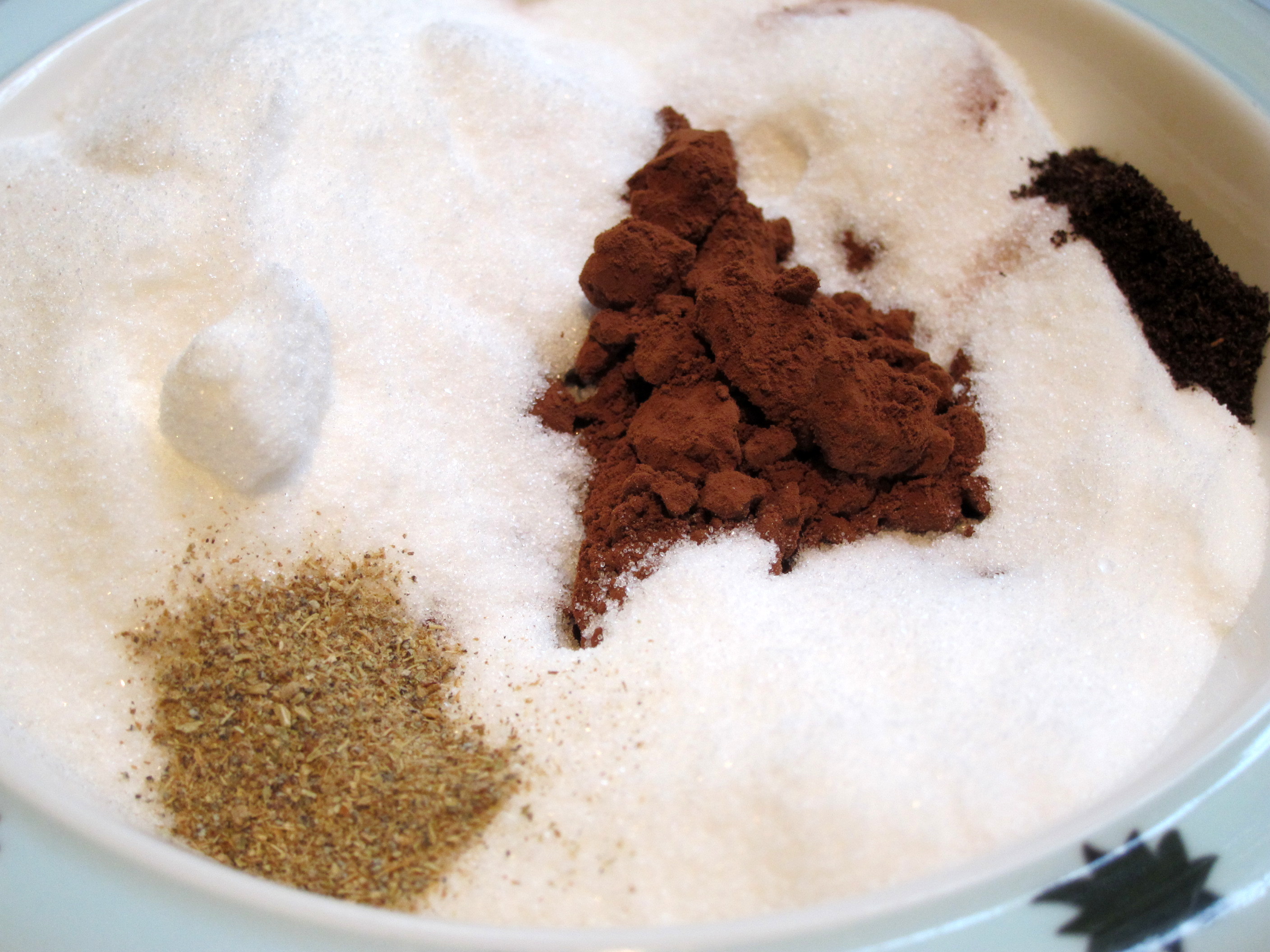
On a bed of sugar, some of the spices used – cardamom, cocoa powder and genuine vanilla powder. In the written recipe, I have replaced half of this cardamom with cinnamon. I can, however, report that both varieties work very well, so choose depending on your own personal preferences in these regards.
For fans of fiery ice creams, I can testify that adding some chile pepper also works perfectly well (I used some ground chile Ancho, the dried version of Poblano). If you go for chile, I would suggest adding a pinch or more (according to your taste and heat-tolerance …) to the sorbet base during the cooling-down phase before churning. Chile heads may try adding more fiery chile types, and also let them go into the base at an earlier stage, together with the other spices.
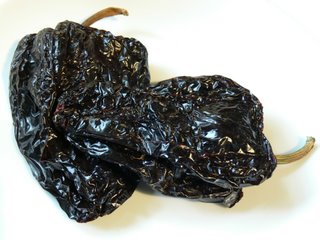
Why not add some (mild, at least) heat to the sorbet? A pinch or more of some ground Ancho chile pepper should be acceptable to most.
In all cases, some salt should also be added – not in order to make the sorbet salty in any way, but to better bring out the flavours of the other ingredients. So even if you would feel sceptical about cardamom and/or cinnamon or chiles, I would still advise that you at least keep the coffee and the salt in the mix.
The basic labour – as easy as preparing a cup of hot chocolate
Yes, really. Mix water, sugar, cocoa powder and the other spices you use and bring close to a simmering boil. Stir in about 50 ml (1/4 cup) strong coffee, preferably espresso. Simmer until all that should dissolve has done so. Take off from the heat and add the Agar agar powder (see below) to the hot liquid: whisk well until all has dissolved completely. Let cool down. Check the sugar level (see below) and add – if using – any coffee liquor to the base.
Avoiding a too firm freeze: sugar, Agar agar and possibly some coffee liquor
A correct sugar level is fundamental for most sorbets – too little sugar, and they will freeze too solid. Too much sugar, and they will never freeze properly. Semi-professionally speaking, sorbet bases should hold a sugar level of about 17-18 so-called Baumé. In the likely case that you do not have fancy instruments to measure the sugar content with, you could still get a good working estimate by using the classic Egg test.
To avoid a too sweet overall flavour while improving scoopability, I substituted some ‘ordinary’ white sugar with inverted sugar (Agave nectar, in this case). The advantage is that the inverted sugar brings all those structural and good elements of sugar to the sorbet, but still adds relatively less of the sweetening sensation that normally would go with the amount – particularly helpful when dealing with chocolate sorbet that does not lend itself so well to mix-ins of lemon juice …
Note that in case you plan on adding coffee liquor (which in itself will make the ice cream softer, and also tend to bring some sweetness of its own), you could reduce the overall amount of sugar somewhat.
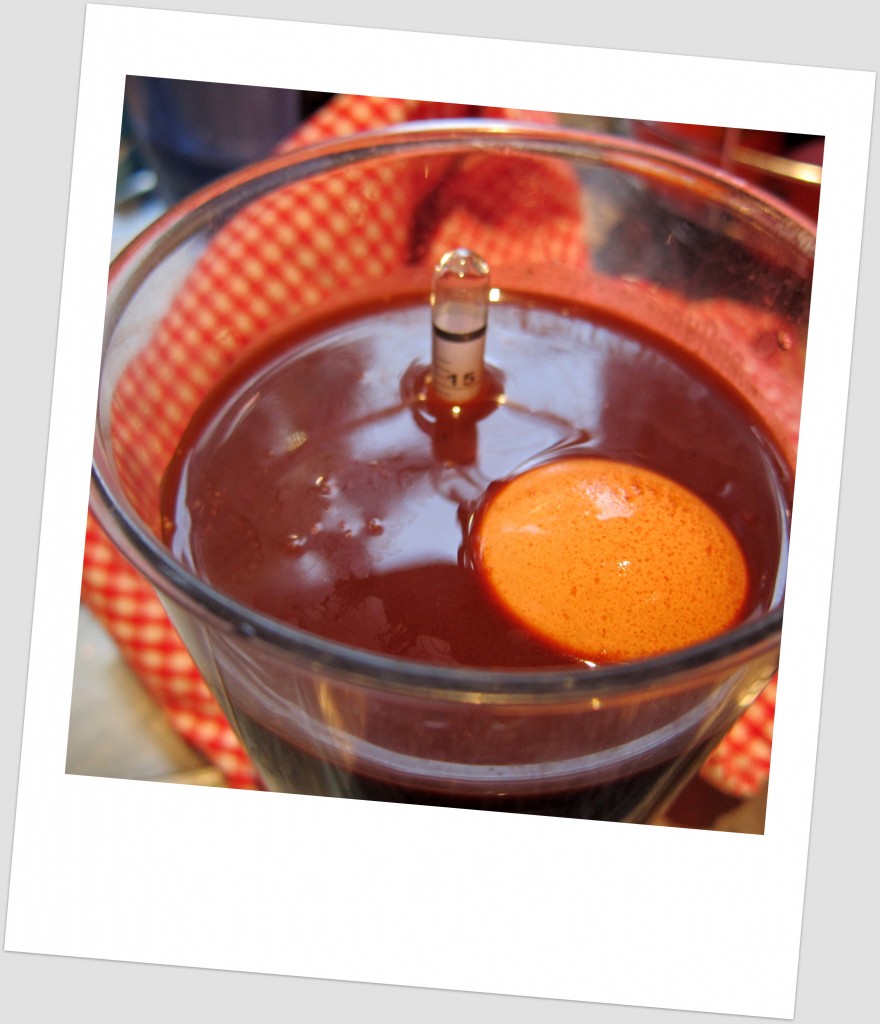
Two ways of checking for the correct sugar level: On top, my saccarometer, a hydrometer measuring the amount of sugar in a liquid. For sorbets, the so-called Baumé degree should be about 17 or 18. Next to it, a washed, raw egg floating along, its elevated position indicating that the sugar level is about right (although verging on the sweet side) for a standard sorbet.
Agar agar – submarine gelling
But sugar aside, a high level of water and very little solids and fats could negatively affect the consistency of sorbets. And while adding alcohol to sorbets is another standard-trick to ensure they won’t freeze too solid, I wanted my sorbet to be scoopable even without that addition. Building on my previous good experience with Agar agar, I decided to add a couple of grams of this natural gelling agent to the sorbet base (in case you decide to add alcohol, however, the sorbet will turn out very nicely even without any Agar agar …). If you plan on enjoying the sorbet relatively soon after you make it, there should however be little need for Agar agar. And you could also increase scoopability by using some more inverted sugar … just be careful to possibly reduce the white sugar accordingly, so you don’t end up with a too sweet end-result.
Note that the Agar needs to be put in and dispersed while the sorbet base still is hot, so do stick to the order in the recipe on that point:-)
Lastly, when the sorbet base has cooled down to a level where it can safely put into the refrigerator, add the coffee liquor (if using). When the base has chilled down, churn it in your ice cream machine according to instructions or still-freeze the sorbet in your freezer.
The final result
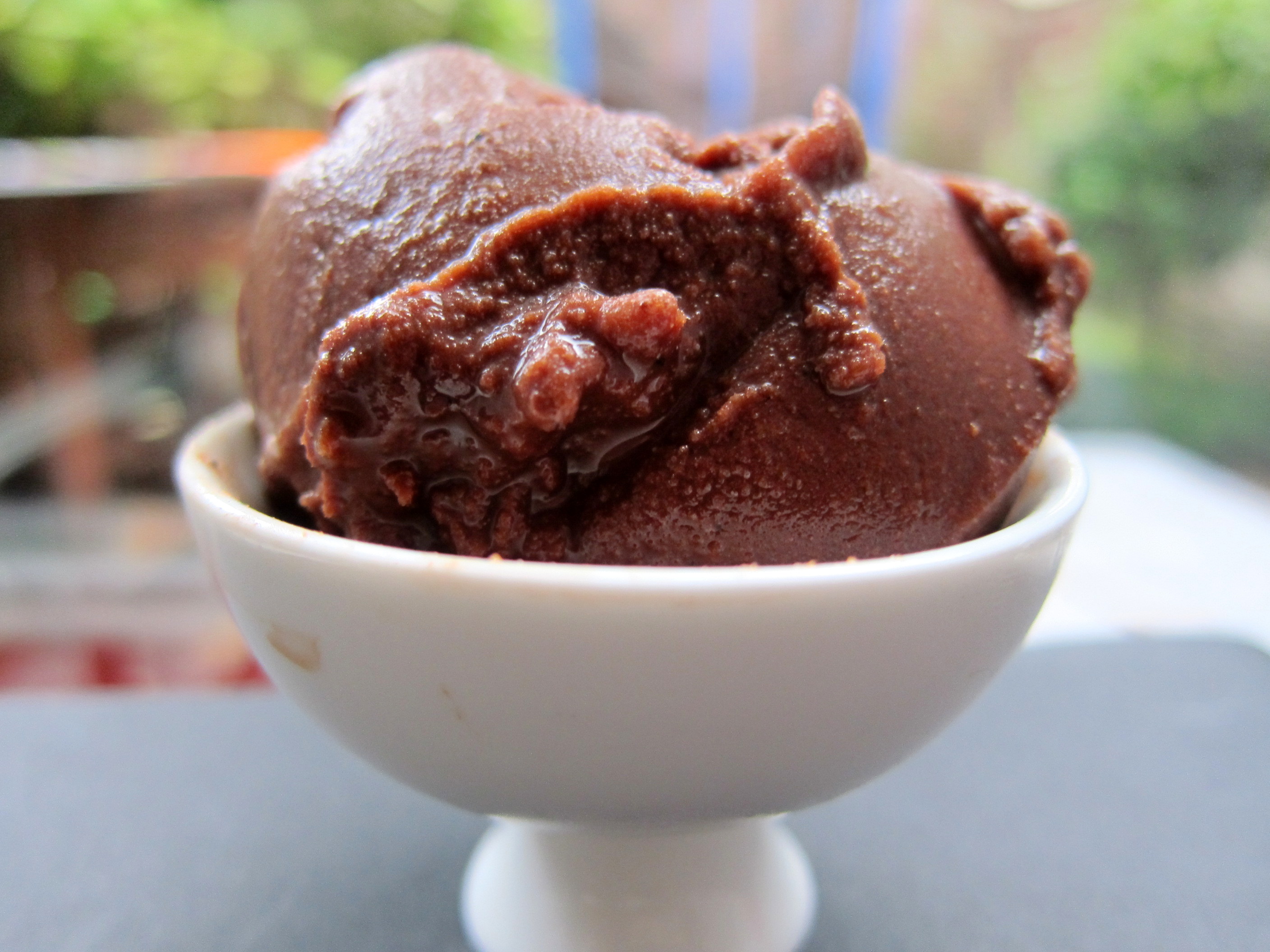
Chocolate sorbet – lean and with a lot of enjoyable flavour (and soft, since the picture is taken straight after churning)
Mmm … this sorbet has quickly become one of my favourites, allowing for some delicious and still relatively lean chocolate indulgence!
The flavours come across in a rich, nice and harmonious way, despite the marked lack of fats. And chocolate lovers do not need to fear – the dominant flavour is unquestionably chocolate, with the added spices only playing supporting – but important – roles. In case you worry about too much of an intrusive cinnamon/cardamom/chile pepper-effect, you could well reduce these spices. But in all cases, do keep the coffee, the vanilla and the salt!
And by all means – do experiment; you might want to tweak the recipe further to find the exact spice combination that best will satisfy you!
- 150 ml (about ¾ cup) sugar
- about 75 ml (slightly less than ⅓ cup) Agave nectar (or other equivalent inverted sugar)
- 110 ml (1/2 cup) cocoa-powder of good quality
- ¼ teaspoon genuine vanilla powder (or extract) of good quality
- about ¼ teaspoon ground cinnamon
- about ¼ teaspoon ground cardamom
- (optional: about ¼ teaspoon ground chile pepper)
- good pinch of salt
- about 470 ml (2 cups) water
- 50 ml (1/4 cup) strong coffee (preferably espresso)
- 2-3 grams of Agar agar
- (optional) 1½ tablespoon coffee liqueur (like Kahlua)
- Mix water, sugar, cocoa powder and the other spices (except for the coffee, and the - optional - chile pepper) that you use and bring close to a simmering boil.
- Stir in the coffee, and simmer until all that should dissolve has done so.
- Take off from the heat and add the Agar agar powder to the hot liquid (as well as the chile pepper, if using): whisk well until all has dissolved completely, then let cool down.
- Check the sugar level using the Egg test (or a saccarometer, if you have one), and - if necessary - add either more water or more sugar until the sweetness-level is OK.
- Add - if using - any coffee liquor to the base.
- Chill the sorbet base in the refrigerator, then churn in your ice cream machine according to instructions OR still-freeze in your freezer.
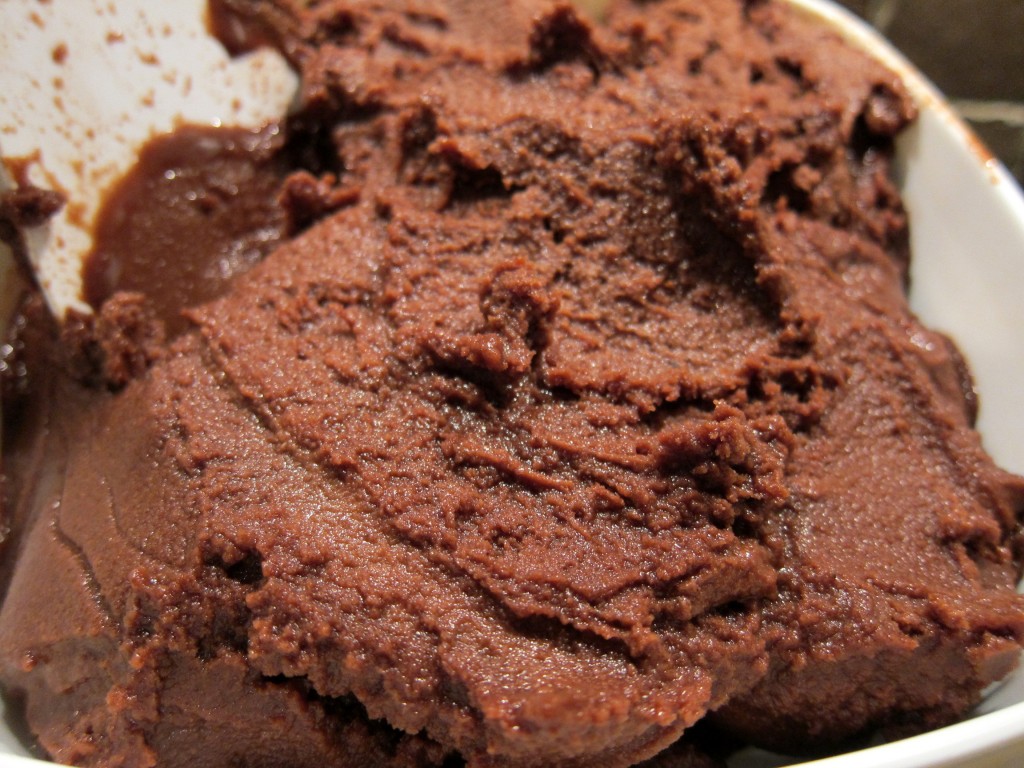
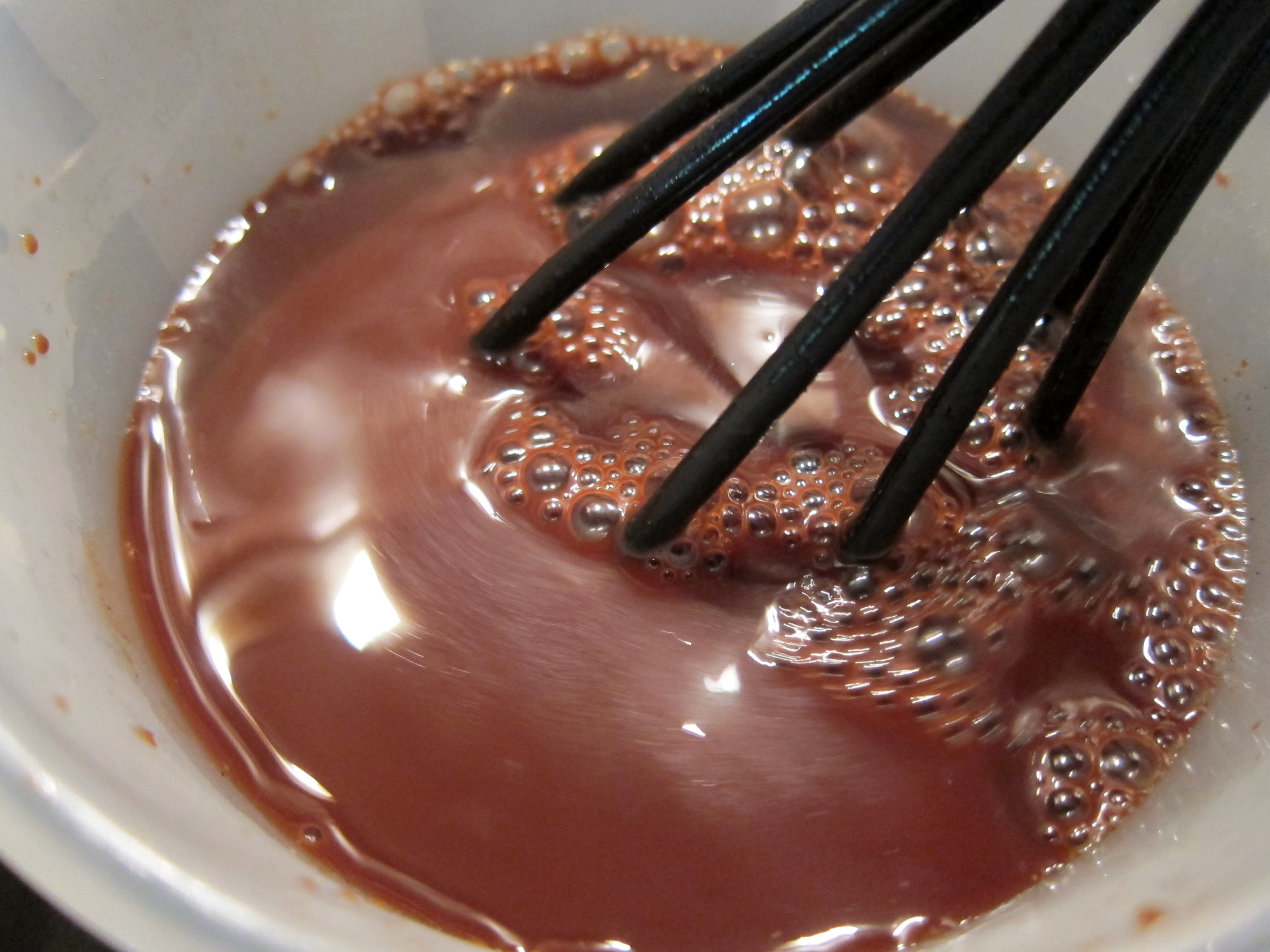
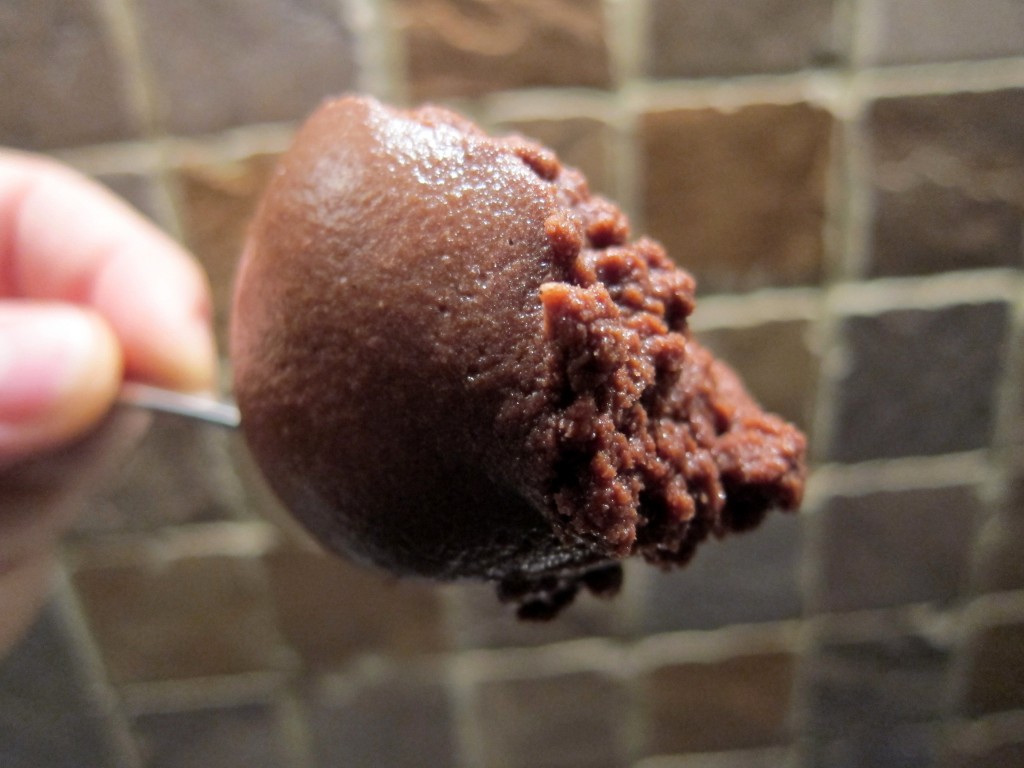

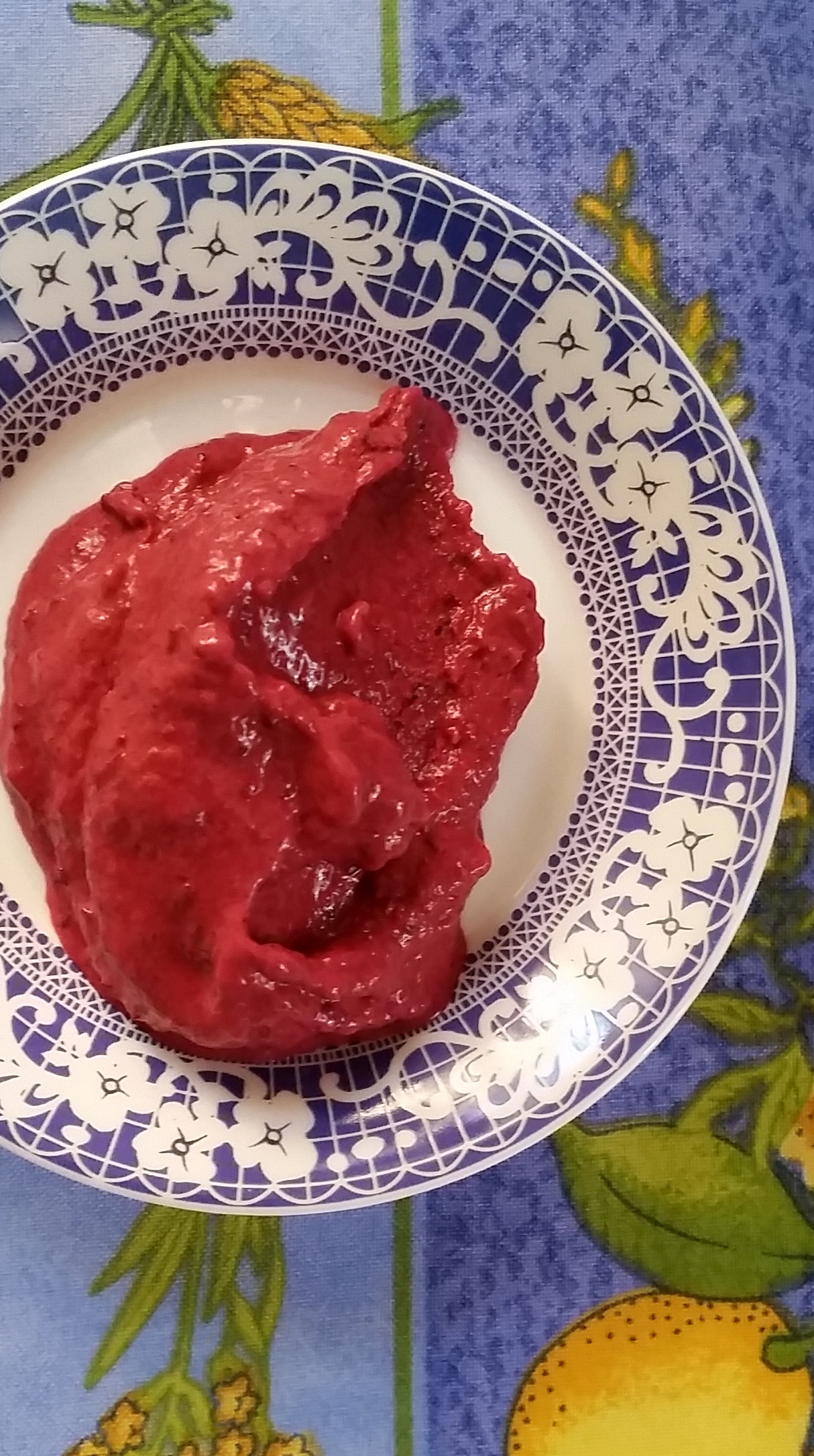
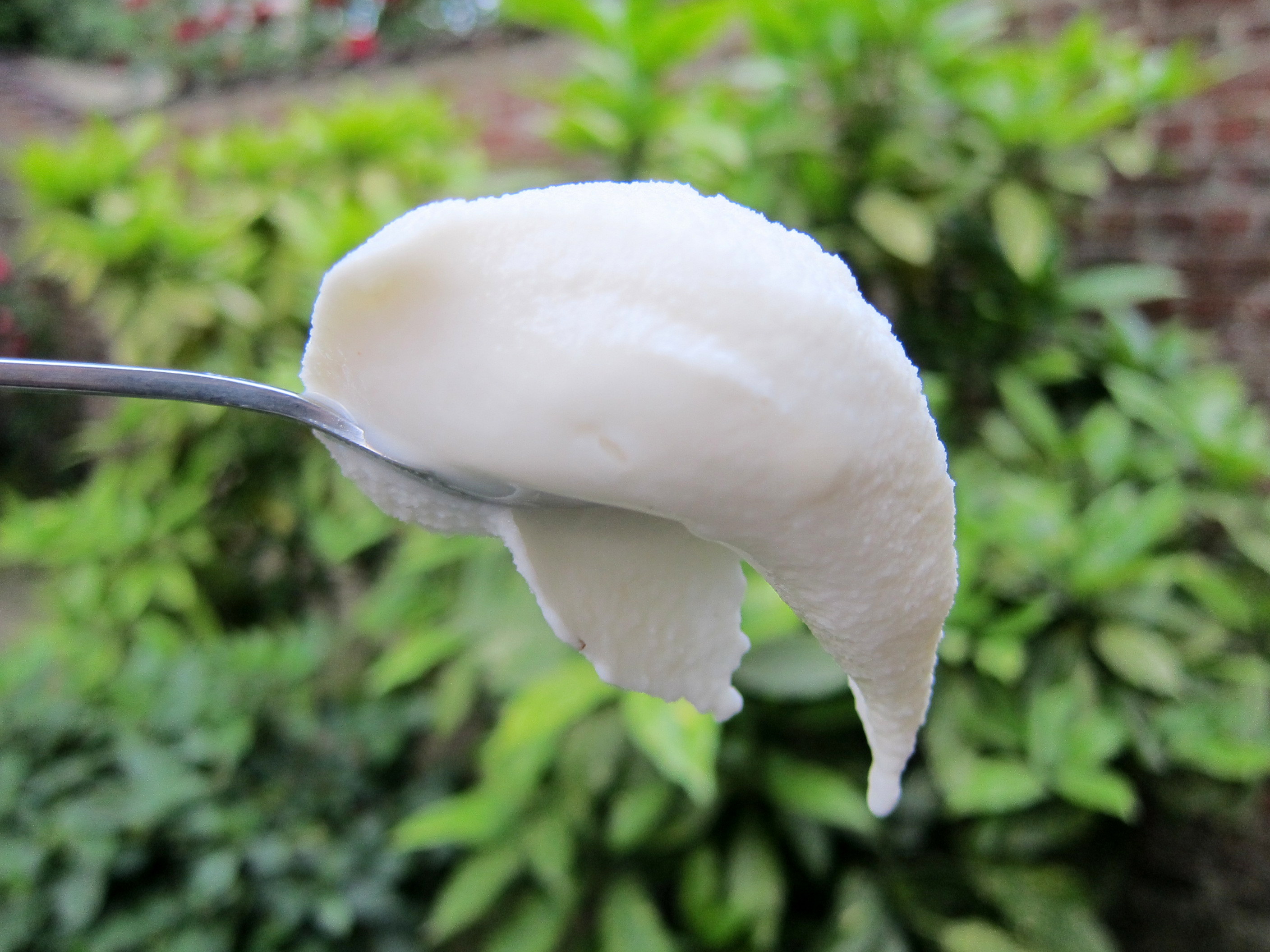


I could happily eat a bowl of this right now.
Maureen, glad to hear that:-)